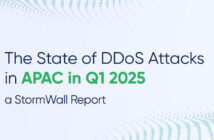
 The term ‘biosecurity’ often conjures images of biological decontamination units, letters containing Anthrax spores, remnants of State sponsored biowarfare programs, and laboratory created super viruses that have the potential to infect millions of people across the globe. Global discourse, along with some of the world’s most educated and influential people such as Bill Gates, warn of scenarios where terrorists or bio-criminals with malicious intent obtain deadly pathogens from synthetic genomics companies, unsecured laboratories or from naturally occurring pathogens found in the environment. The potential for biological weapons to be developed and delivered into overpopulated cities with relative ease is a frightening but realistic prospect.
The term ‘biosecurity’ often conjures images of biological decontamination units, letters containing Anthrax spores, remnants of State sponsored biowarfare programs, and laboratory created super viruses that have the potential to infect millions of people across the globe. Global discourse, along with some of the world’s most educated and influential people such as Bill Gates, warn of scenarios where terrorists or bio-criminals with malicious intent obtain deadly pathogens from synthetic genomics companies, unsecured laboratories or from naturally occurring pathogens found in the environment. The potential for biological weapons to be developed and delivered into overpopulated cities with relative ease is a frightening but realistic prospect.
The global biosecurity literature therefore takes a multidimensional, layered approach to the threats which pose a security risk. Of specific note is the Danish biosecurity system which addresses modern biosecurity threats evolving and emerging from the global environment. The legislative framework operates under a single, national biosecurity agency – The Centre for Biosecurity and Preparedness (CBB). In Denmark, biosecurity is understood as ‘the prevention of malicious use of biological substances and related materials’ and the biosecurity effort aims to secure biological agents and related materials from potential theft, loss, accidental release or malicious use. The contemporary Danish operating model is reflective of the multidimensional concept of global biosecurity, and is pre-emptive in nature, rather than reactive.
In Australia however, the term ‘Biosecurity’ is often synonymous with quarantine. Biosecurity is frequently understood in an agricultural context and on a practical level, is mostly an extended quarantine function – addressing the risks of pests, weeds and diseases contaminating our environment, impacting on Australia’s agricultural sector and economy as well as human health. In the Australian context, the Biosecurity Act 2015 (Cth) provides for the legislative administration of biosecurity in Australia, however its focus is predominantly centred on border control and administrative functions, along with powers relating to biosecurity response, post event. Consequently, it is very much a quarantine model, albeit an extended one. So why is there such disparity between the global framework of reference and biosecurity in Australia?…Click HERE to read full article.





